Hotel Rakuragu is a tiny but mighty modern escape in Tokyo
Hotel Rakuragu, brought to life by Kooo Architects, lies within an 80 sq m plot in the area of Chuo-ku
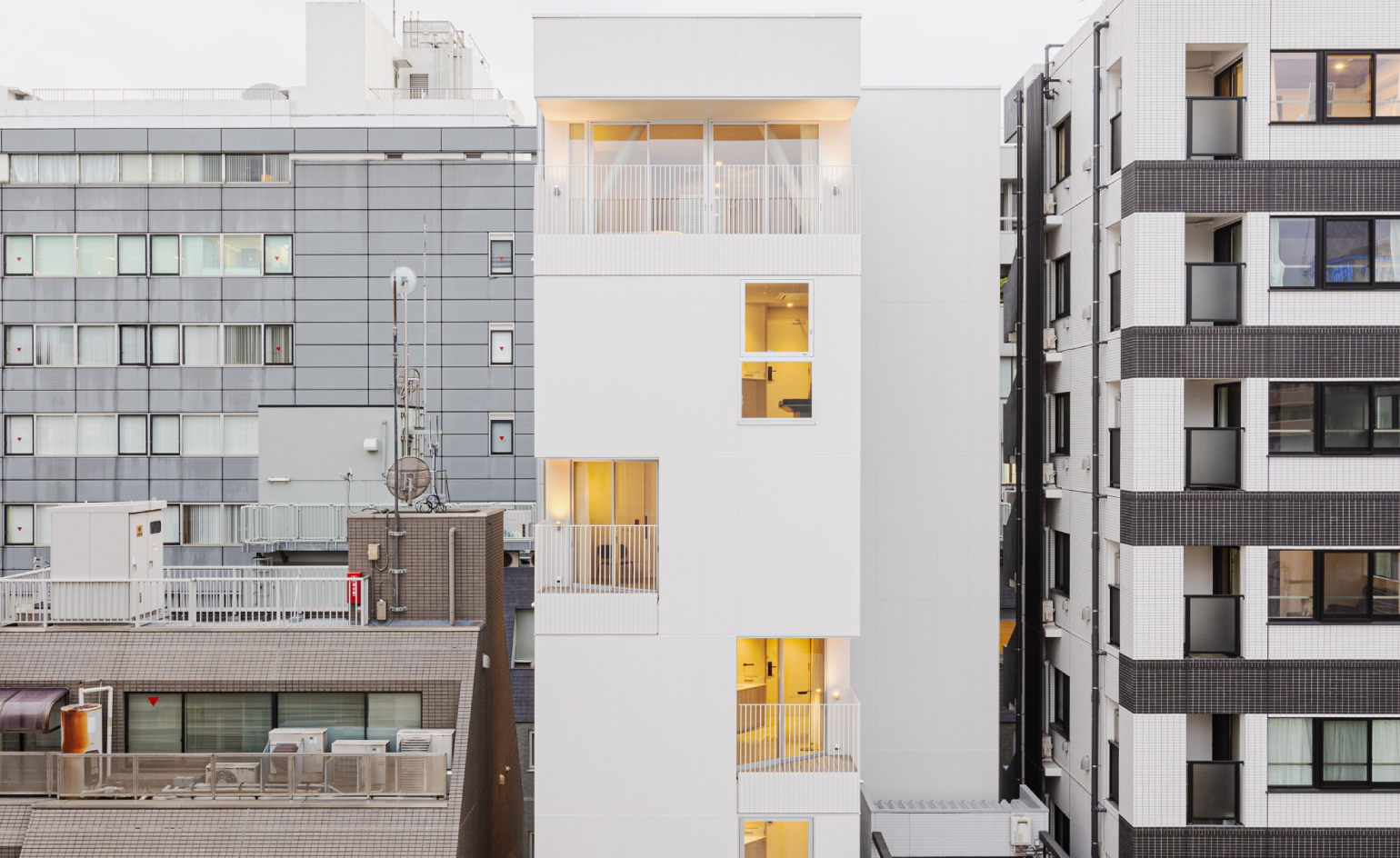
A former parking lot between two buildings, spanning just over 80 sq m, may not sound like the obvious site to build a new hotel – even in building-packed Tokyo. Yet this tight footprint was the springboard for Hotel Rakuragu, a uniquely tall and narrow contemporary structure, rising to nine storeys in height between its neighbours in the Nihonbashi district.
The skinny on slender Hotel Rakuragu
The new hotel, which opened in earlier in March, with 14 guest rooms, was brought to life by Kooo Architects, a studio based in Tokyo and Shanghai, with a design rooted in a deep sensitivity to its compact inner-city location.
The tall white structure is minimalist and abstract, with a lantern-like façade with an irregular scattering of cut-out windows and angular balconies, each positioned to maximise natural light, as well as privacy from the surrounding buildings.
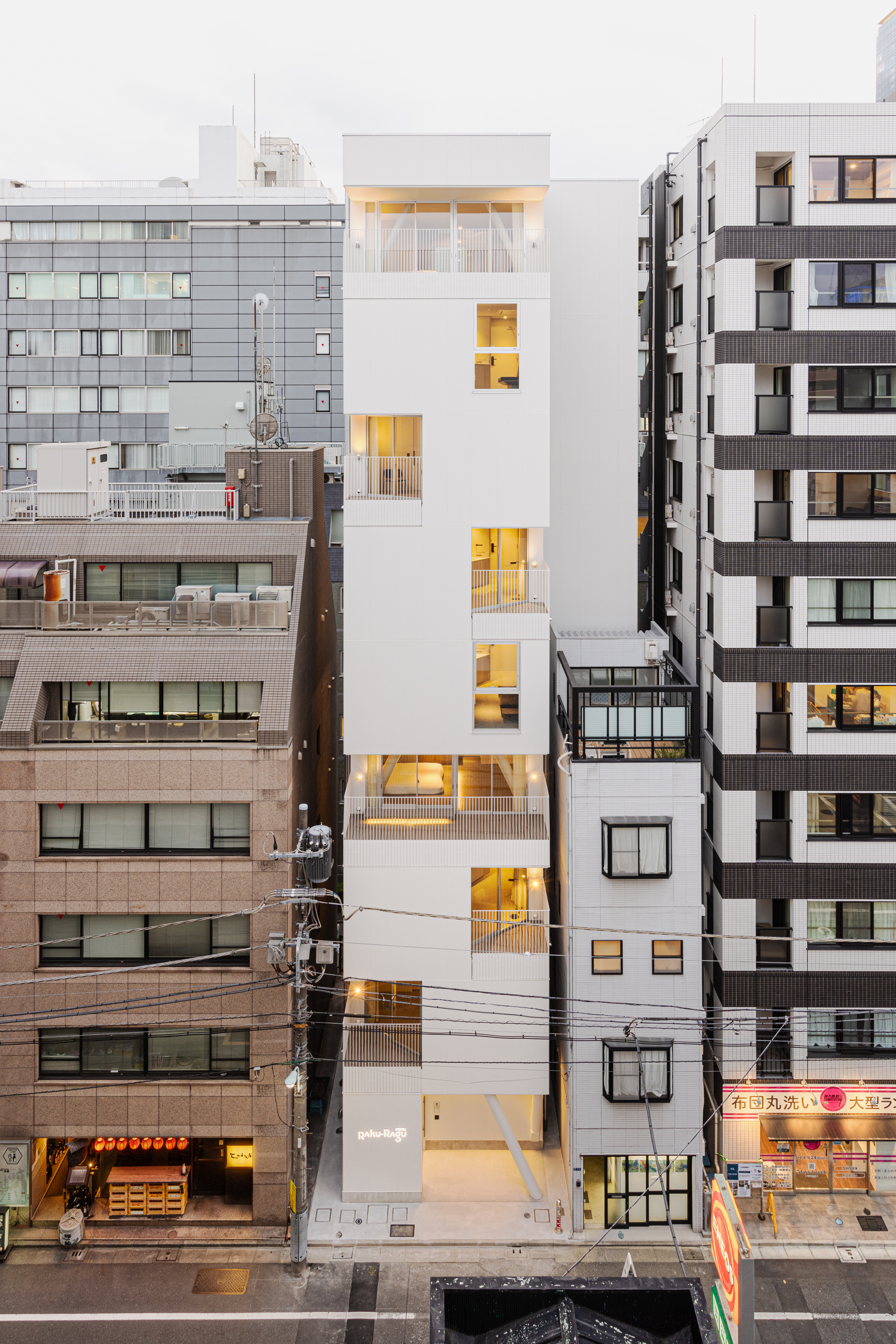
‘This kind of hotel could only happen in Japan,’ Ailu Yang, of AM Limited Company, the owner of the new hotel, tells Wallpaper*. ‘We want guests to feel a sense of inner peace while staying at this hotel, almost like being in a modern temple.’
A minimal white aesthetic characterises the hotel, both inside and out. Spanning a floor plan of 60.66 sq m on a lowkey back street in Nihonbashi, two white angled pillars sit like abstract artworks at its base – a clue into its structural form, which was strengthened using both a braced frame and a rigid frame.
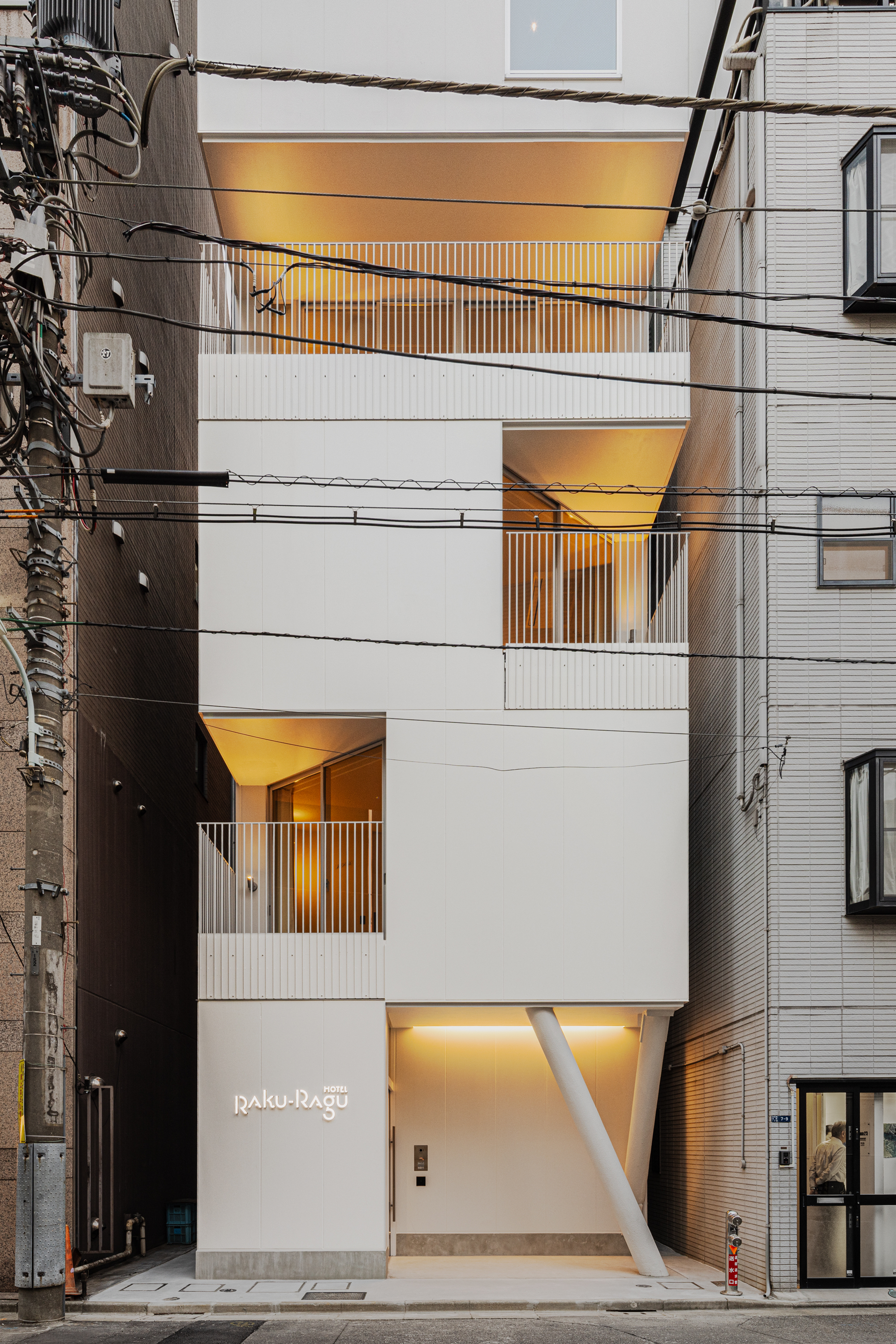
‘The building site itself is quite small,’ Shinya Kojima, co-founder of Kooo Architects, tells Wallpaper*. ‘But by observing the shape of the buildings on either side and the shape of the buildings opposite the site, we were comfortably able to find an outward opening direction on each floor, even in a densely built-up area.’
Ayaka Kojima, co-founder of Kooo Architects, adds: ‘The first major feature of the building is its structural form, which is designed to give the building a characteristic appearance of a hollowed-out white rectangle. There are no pillars on the balconies so as not to block the guests’ view of the outside.
Receive our daily digest of inspiration, escapism and design stories from around the world direct to your inbox.
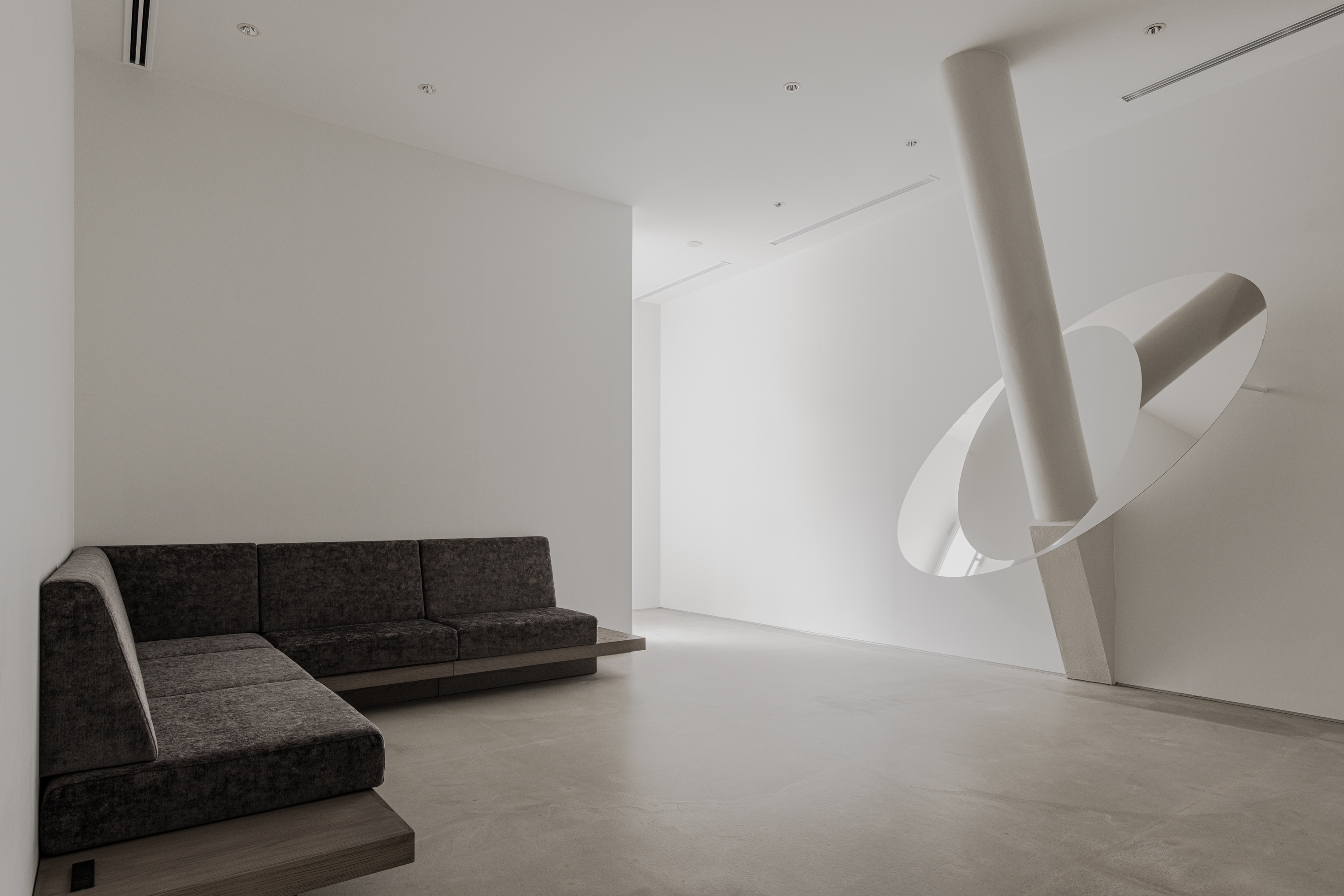

‘The facade has a sense of rhythm: some balconies on each floor are hollowed out in a triangular shape on either side, while others have large balconies along the entire front side. This allows for a certain degree of freedom in the arrangement of the columns.’
Upon entering, the simple lobby space, with its white walls, concrete floors, grey seating and white front desk, is minimal, modern and functional, with the added touch of an elliptical mirrored sculpture hovering around another white pillar – a bespoke artwork created by Tokyo design studio We+.
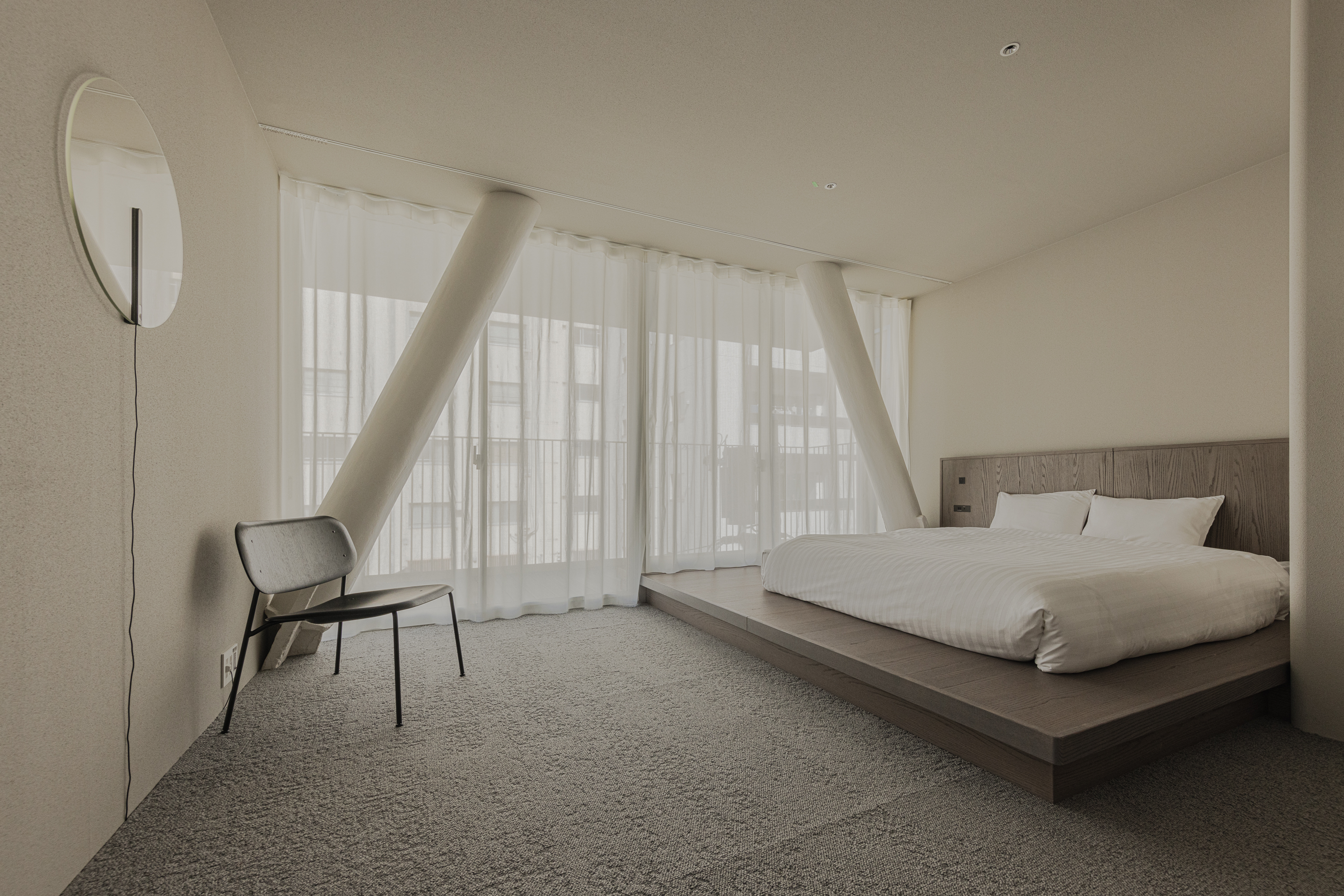
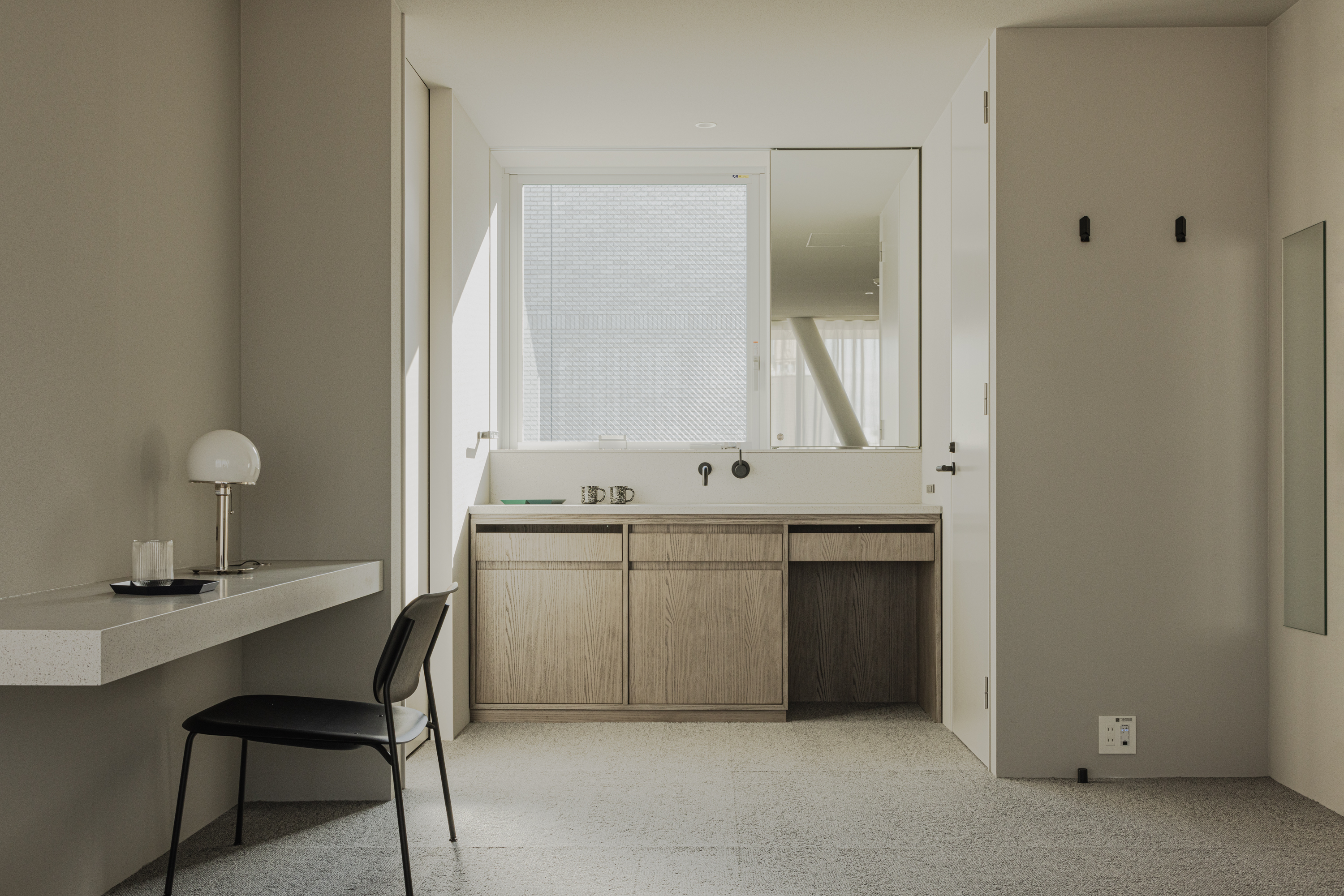
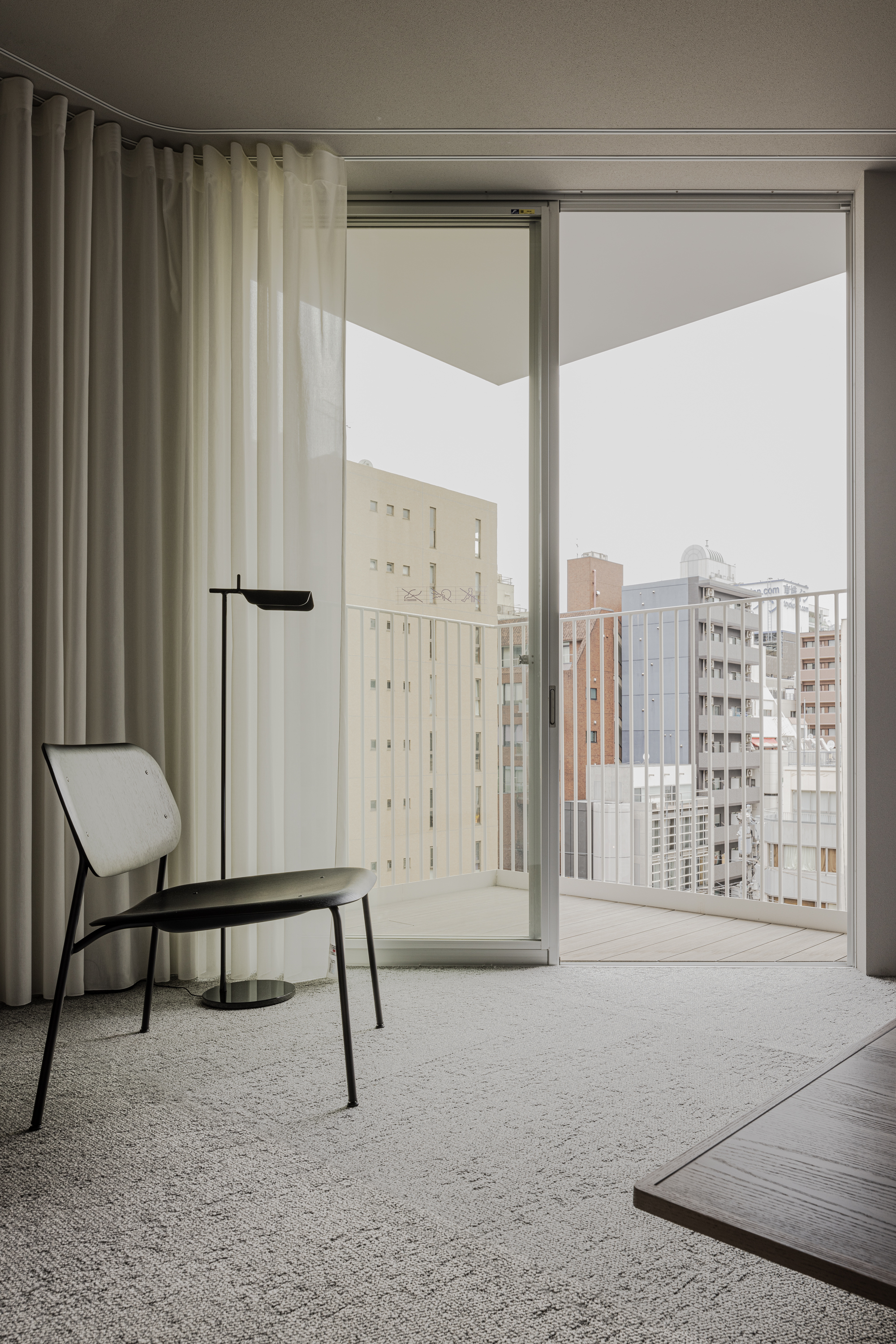
An elevator carries guests to the upper levels, each home to just one or two guest rooms, ranging from a compact 13 sq m to a more spacious 35 sq m, many with plant-lined balconies or large cut-out windows.
Despite the no-frills foundation, the rooms are enhanced by a contemporary softness in the textures, materials and palette – from the diatomaceous earth wallpaper and the curved edges of all wall corners to the woven grey carpets, low wooden bed platforms, circular mirrors and light curtains.
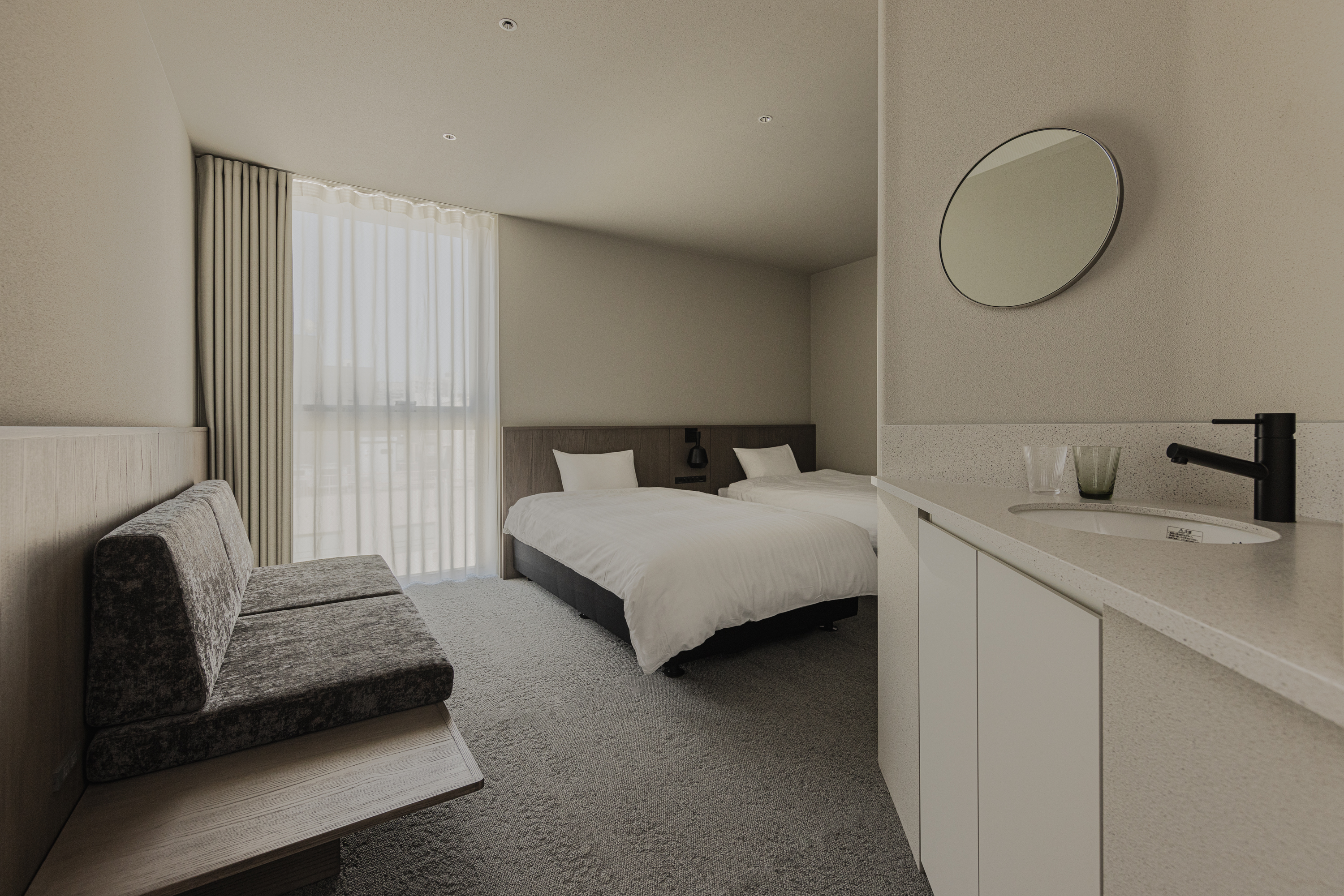
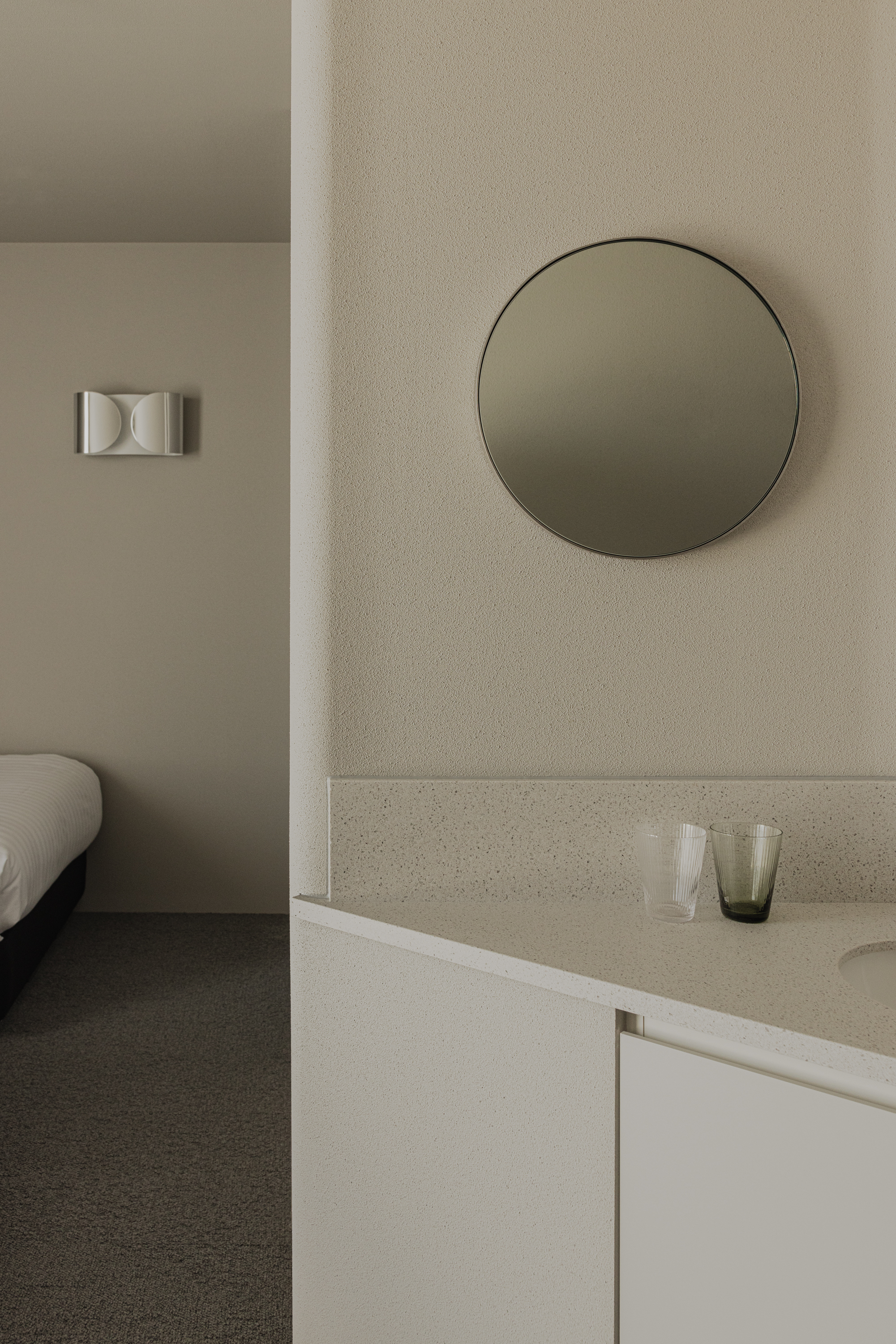

The building’s unique DNA is also present throughout; a scattering of angled white floor-to-ceiling columns, which have a functional role of supporting the building, are transformed into an architectural feature in a number of guest rooms.
‘We tried to create a layout and select materials that allow guests to fall asleep comfortably and wake up in the morning sun,’ says Shinya Kojima. ‘For this reason, diatomaceous earth wallpaper is used on the walls, with the idea that light can also be felt through the texture of the wallpaper.’
A music theme also quietly underpins the hotel – from the name, which references ‘ragtime’ in Japanese to the jazz soundtracks in the lobby (QR code-accessible in-room playlists and jazz event ticket sales are also planned).
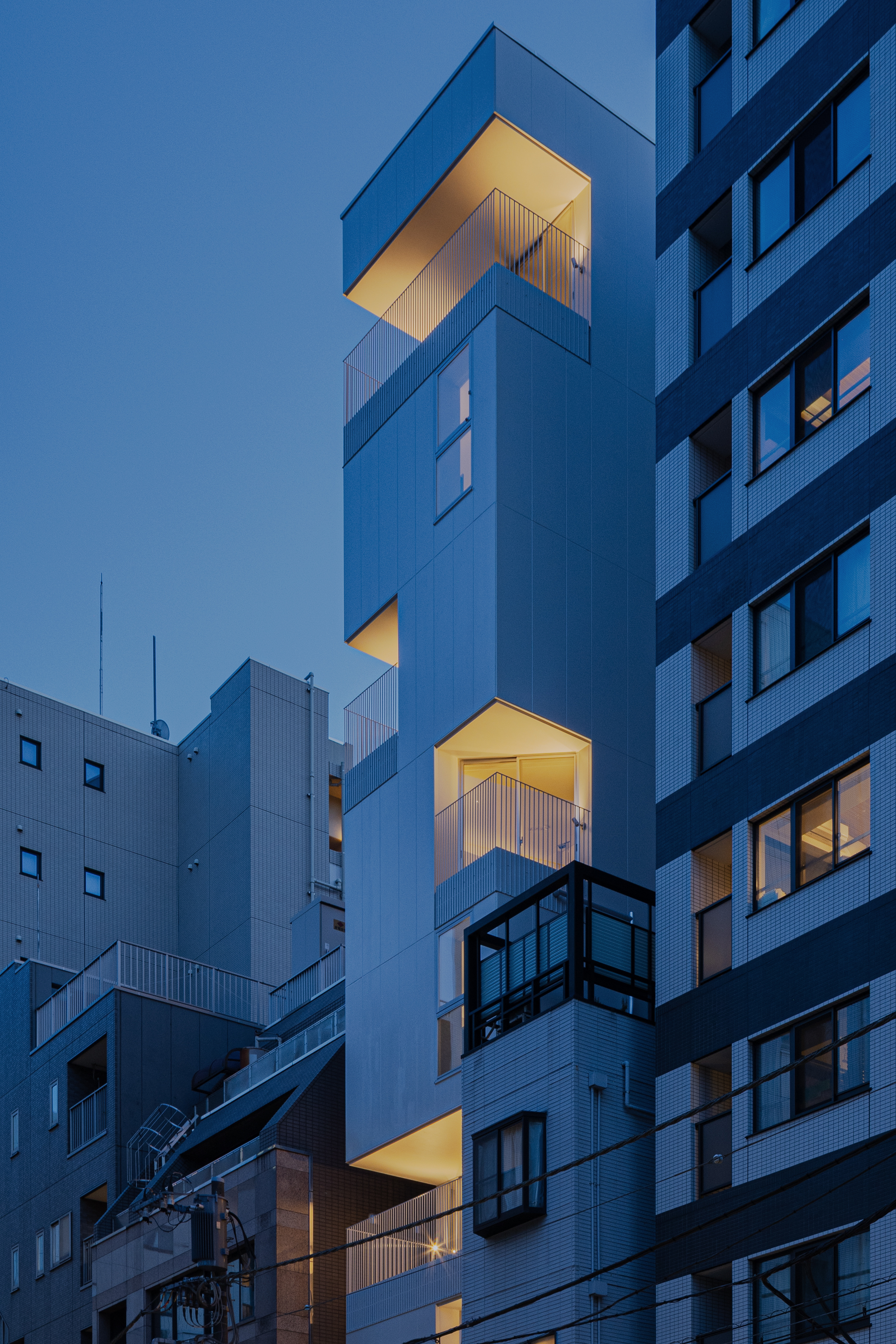
Danielle Demetriou is a British writer and editor who moved from London to Japan in 2007. She writes about design, architecture and culture (for newspapers, magazines and books) and lives in an old machiya townhouse in Kyoto.
Instagram - @danielleinjapan
-
 New York's members-only boom shows no sign of stopping – and it's about to get even more niche
New York's members-only boom shows no sign of stopping – and it's about to get even more nicheFrom bathing clubs to listening bars, gatekeeping is back in a big way. Here's what's driving the wave of exclusivity
-
 The diverse world of Belgian embassy design – 'style and class without exaggeration'
The diverse world of Belgian embassy design – 'style and class without exaggeration''Building for Belgium: Belgian Embassies in a Globalising World' offers a deep dive into the architecture representing the country across the globe – bringing context to diplomatic architecture
-
 Pull up a bespoke pew at Milan’s new luxury perfumery Satinine, an homage to the city’s entryways
Pull up a bespoke pew at Milan’s new luxury perfumery Satinine, an homage to the city’s entrywaysDesigner Mara Bragagnolo fuses art deco details to bring storied Milanese fragrance brand Satinine into the 21st century
-
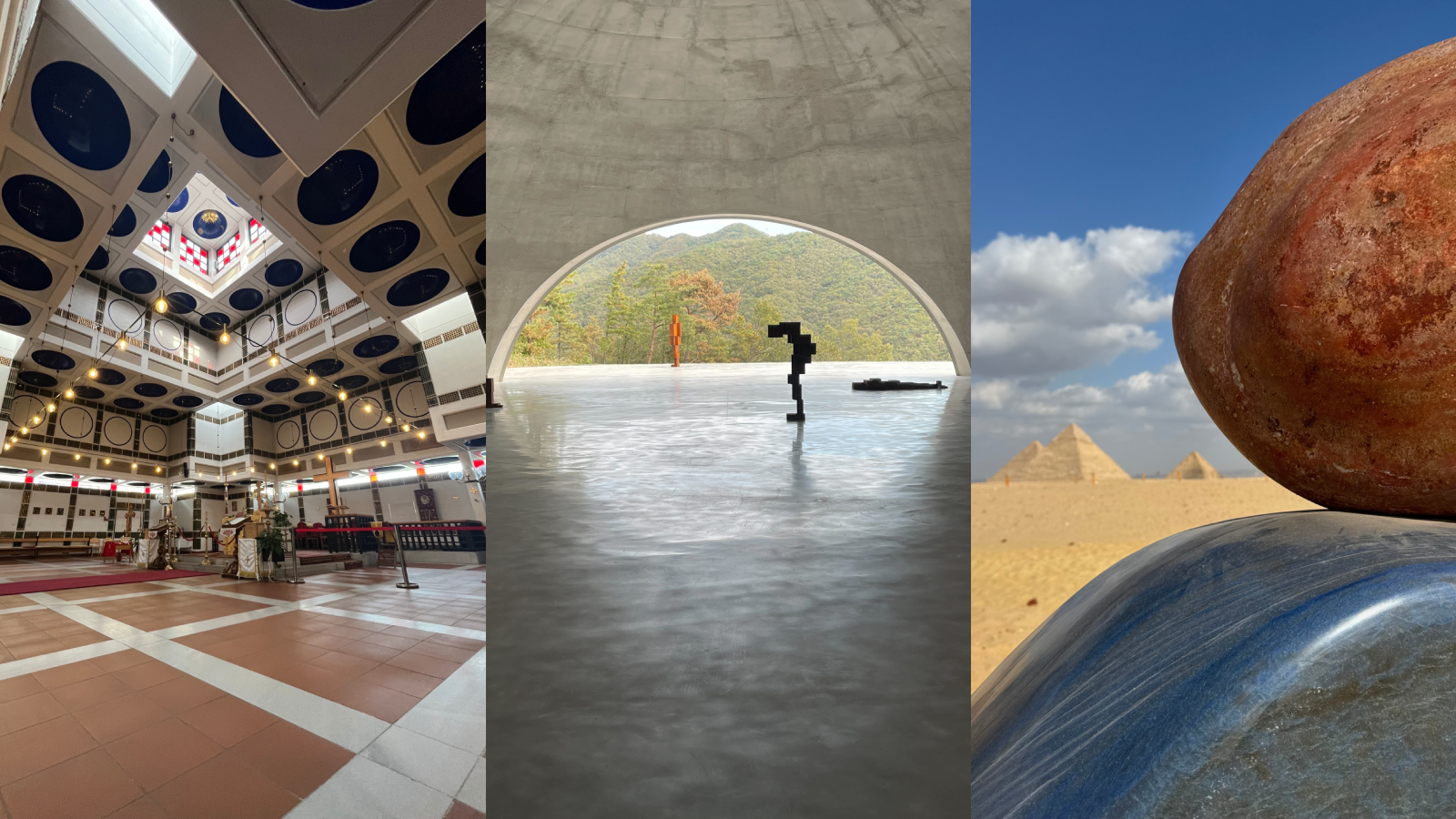 The Wallpaper* team’s travel highlights of the year
The Wallpaper* team’s travel highlights of the yearA year of travel distilled. Discover the destinations that inspired our editors on and off assignment
-
 Curvilinear futurism meets subtropical beaches at Not A Hotel’s ZHA-designed Okinawa retreat
Curvilinear futurism meets subtropical beaches at Not A Hotel’s ZHA-designed Okinawa retreatZaha Hadid Architects has revealed the design for the first property in Not A Hotel’s futuristic new Vertex collection, coming soon to southern Japan
-
 Free flights across Japan? ANA just made it happen
Free flights across Japan? ANA just made it happenA new All Nippon Airways scheme in collaboration with the Japan National Tourism Organization aims to ease overtourism in major hubs by boosting regional travel
-
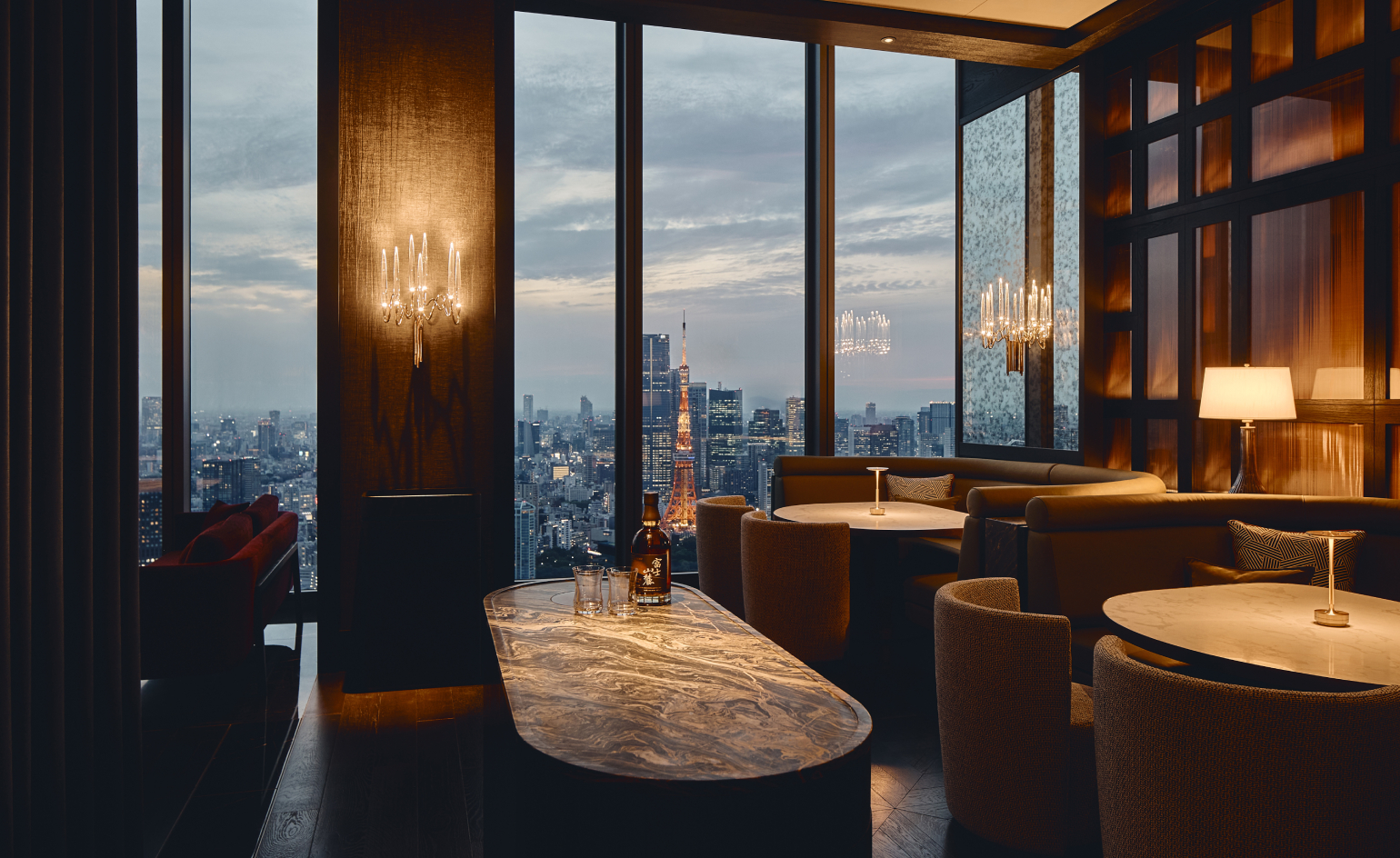 Is this Tokyo’s most alluring new hotel?
Is this Tokyo’s most alluring new hotel?In the world’s busiest capital, a new benchmark for serenity emerges 35 floors above ground. We checked into the Fairmont Tokyo
-
 A cinematic members’ club rises in Japan’s forested hills
A cinematic members’ club rises in Japan’s forested hillsJoyce Wang Studio unveils The Magarigawa Club Clubhouse in Chiba
-
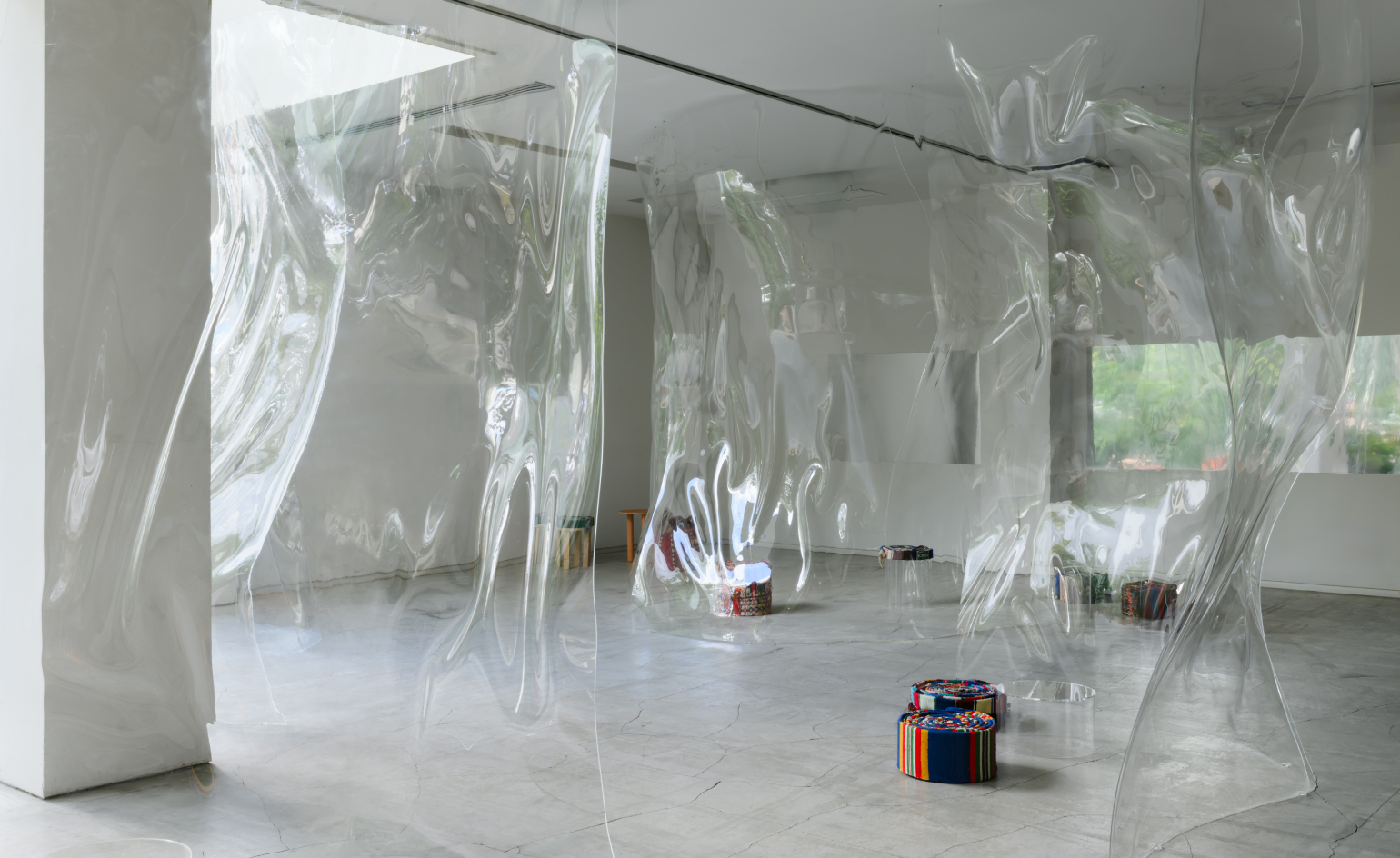 How Ichio Matsuzawa designed the almost-invisible bar defining Art Week Tokyo 2025
How Ichio Matsuzawa designed the almost-invisible bar defining Art Week Tokyo 2025During the 2025 edition of AWT, Wallpaper* met the Japanese architect to explore architecture as sensation, not structure
-
 In Sou Fujimoto’s far-flung Not A Hotel villa, solitude feels almost planetary
In Sou Fujimoto’s far-flung Not A Hotel villa, solitude feels almost planetaryAn underwater sauna, an infinity pool and a circular courtyard garden are just a few of the highlights at Not A Hotel’s latest outpost, on Japan’s Ishigaki Island
-
 Check into a new pocket-sized Tokyo hotel
Check into a new pocket-sized Tokyo hotelSoil Nihonbashi Hotel brings greenery, warmth and a neighbourhood spirit to a quiet corner near Tokyo Central Station